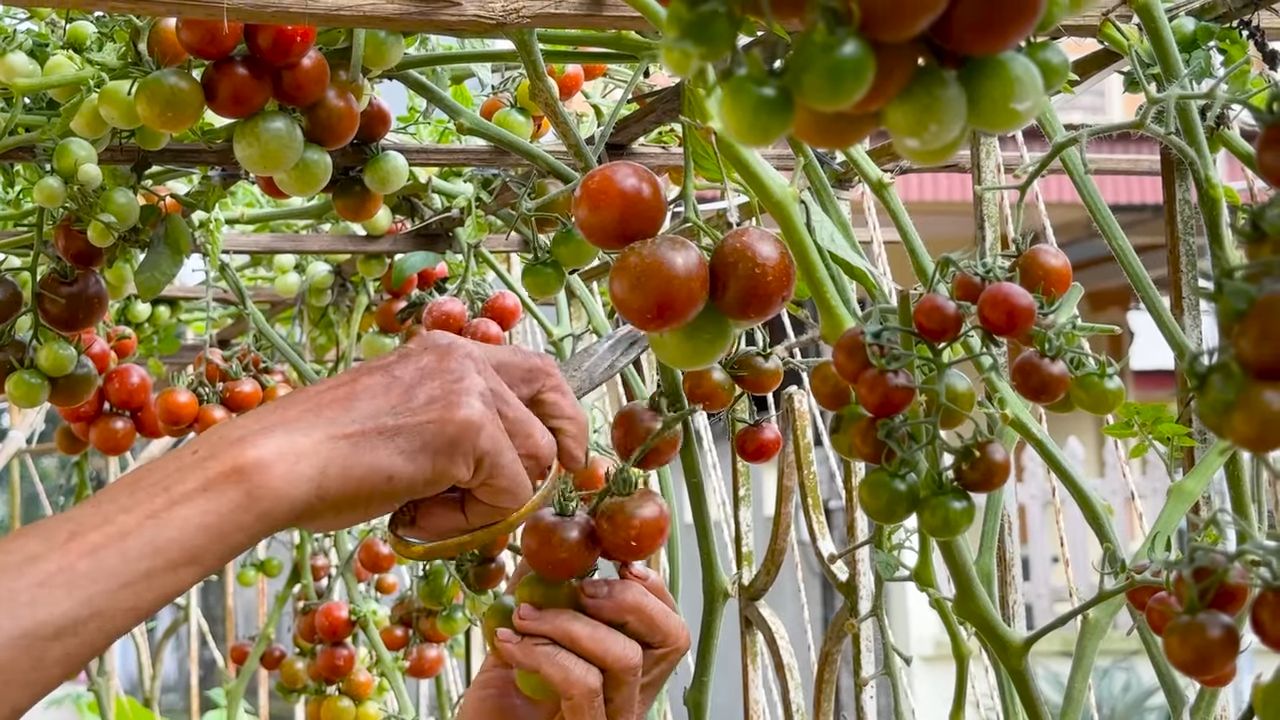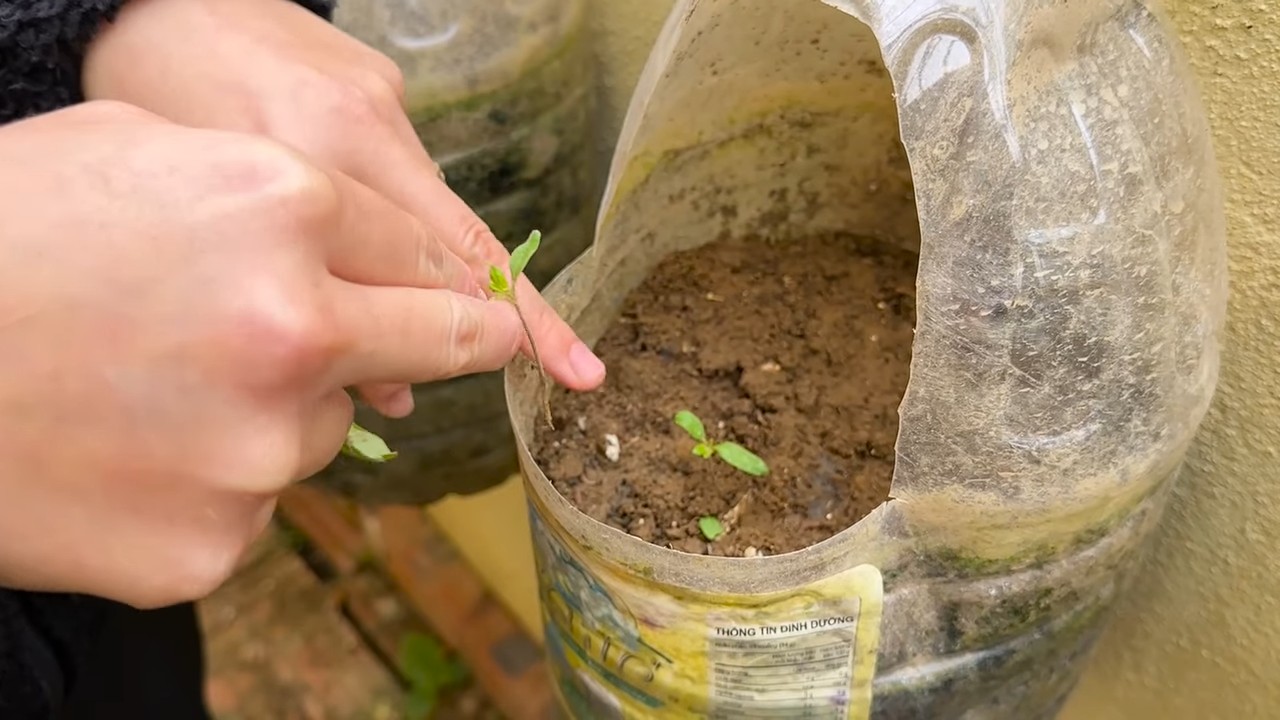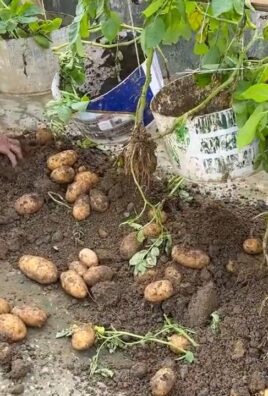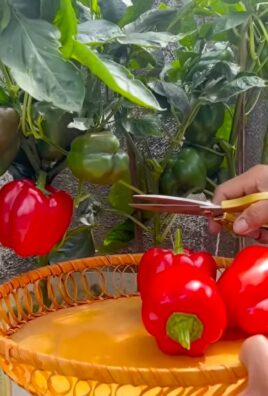DIY hydroponic lettuce garden: Ever dreamt of harvesting crisp, fresh lettuce right from your kitchen, no matter the season? Imagine skipping those wilted, overpriced greens at the grocery store and enjoying a vibrant salad grown with your own two hands. Well, stop dreaming and start doing! This article is your ultimate guide to creating your very own DIY hydroponic lettuce garden, a surprisingly simple and rewarding project that will transform the way you think about fresh produce.
Hydroponics, the art of growing plants without soil, has ancient roots, dating back to the Hanging Gardens of Babylon and the floating gardens of the Aztecs. Today, it’s a modern marvel, offering a sustainable and efficient way to cultivate food in urban environments and beyond. But you don’t need to be an ancient civilization or a tech guru to get in on the action. I’m here to show you how to build a simple, affordable, and incredibly productive DIY hydroponic lettuce garden right in your own home.
Why lettuce, and why hydroponics? Lettuce is a fast-growing, nutrient-packed leafy green that thrives in hydroponic systems. Plus, let’s be honest, who doesn’t love a good salad? With a DIY hydroponic lettuce garden, you’ll have a constant supply of fresh, organic lettuce at your fingertips. Say goodbye to food waste, reduce your carbon footprint, and impress your friends and family with your green thumb (even if you’ve never grown anything before!). Let’s dive in and unlock the secrets to a thriving indoor garden!

Build Your Own Thriving Hydroponic Lettuce Garden: A Step-by-Step Guide
Hey there, fellow gardening enthusiasts! Are you dreaming of fresh, crisp lettuce right at your fingertips, all year round, without the hassle of soil? Well, you’ve come to the right place! I’m going to walk you through building your very own hydroponic lettuce garden. It’s easier than you think, and the rewards are incredibly delicious.
What is Hydroponics, Anyway?
Before we dive in, let’s quickly cover what hydroponics actually is. Simply put, it’s growing plants without soil, using water and nutrient solutions. This method allows you to control the environment, optimize nutrient delivery, and often results in faster growth and higher yields. Plus, it’s super cool!
Gathering Your Supplies: The Shopping List
Okay, let’s get down to business. Here’s what you’ll need to build your hydroponic lettuce haven. Don’t worry, most of these items are readily available at your local hardware store or online.
* A Container: This will be the heart of your system. A dark-colored plastic storage tote (around 10-20 gallons) works perfectly. The darkness helps prevent algae growth.
* Net Pots: These are small, slotted pots that will hold your lettuce seedlings. You’ll need enough for the number of lettuce plants you want to grow. 2-inch net pots are a good size.
* Hydroponic Growing Medium: This provides support for your plants’ roots. Rockwool cubes, coco coir, or clay pebbles are all excellent choices. I personally prefer rockwool for lettuce.
* Air Pump and Air Stone: These are essential for oxygenating the nutrient solution. The air pump pushes air through the air stone, creating bubbles that increase oxygen levels.
* Air Tubing: Connects the air pump to the air stone.
* Hydroponic Nutrients: Specifically formulated for leafy greens. Look for a two-part nutrient solution (Part A and Part B) for optimal results.
* pH Testing Kit: Crucial for maintaining the correct pH level in your nutrient solution. A digital pH meter is the most accurate, but pH test strips are a more affordable option.
* pH Up and pH Down Solutions: To adjust the pH of your nutrient solution as needed.
* Drill and Hole Saw: To create holes in the lid of your container for the net pots. The hole saw should be the same size as the diameter of your net pots.
* Measuring Cups and Spoons: For accurately measuring nutrients and pH adjusting solutions.
* Lettuce Seeds or Seedlings: Choose your favorite lettuce varieties! Romaine, butter lettuce, and loose-leaf varieties are all great choices for hydroponics.
* Grow Lights (Optional but Recommended): If you don’t have a sunny spot, grow lights will provide the necessary light for your lettuce to thrive. LED grow lights are energy-efficient and work well.
* Timer (Optional): To automate the grow lights.
Step-by-Step Instructions: Building Your Hydroponic System
Alright, let’s get our hands dirty (well, not really, since it’s hydroponics!). Follow these steps to build your very own hydroponic lettuce garden:
1. Prepare the Container: Start by cleaning your plastic storage tote thoroughly with soap and water. Rinse it well to remove any residue.
2. Drill Holes in the Lid: This is where your net pots will sit. Using your drill and hole saw, carefully drill holes in the lid of the container. Space the holes evenly, allowing enough room for the lettuce plants to grow without crowding each other. A good rule of thumb is to leave at least 4-6 inches between each hole.
3. Assemble the Air System: Connect one end of the air tubing to the air pump and the other end to the air stone. Place the air stone inside the container.
4. Prepare the Nutrient Solution: This is a crucial step! Follow the instructions on your hydroponic nutrient solution bottles to mix the correct amount of Part A and Part B with water. Use a clean measuring cup and spoon for each part to avoid contamination. I usually start with half the recommended strength and gradually increase it as the plants grow.
5. Check and Adjust the pH: Use your pH testing kit to measure the pH of the nutrient solution. Lettuce thrives in a pH range of 5.5 to 6.5. If the pH is too high, add a small amount of pH Down solution. If it’s too low, add a small amount of pH Up solution. Always add these solutions gradually and re-test the pH after each adjustment. Stir well after each addition.
6. Fill the Container: Pour the nutrient solution into the container, making sure the water level is high enough to reach the bottom of the net pots when they are in place.
7. Prepare the Net Pots: If you’re starting with seeds, sow them directly into the rockwool cubes (or your chosen growing medium). Moisten the rockwool cubes with nutrient solution before planting the seeds. If you’re using seedlings, gently remove them from their original containers and place them in the net pots, surrounding the roots with the growing medium.
8. Place the Net Pots in the Lid: Carefully place the net pots into the holes you drilled in the lid. Make sure they are secure and stable.
9. Position the Lid on the Container: Place the lid with the net pots on top of the container, ensuring it fits snugly.
10. Set Up the Air Pump: Plug in the air pump and make sure it’s working properly. You should see bubbles rising from the air stone in the nutrient solution.
11. Provide Light: If you’re using grow lights, position them above the lettuce plants. The distance between the lights and the plants will depend on the type of grow lights you’re using. Follow the manufacturer’s recommendations. If you’re using natural sunlight, place the hydroponic system in a location that receives at least 6 hours of direct sunlight per day.
12. Set the Timer (If Using): If you’re using a timer for your grow lights, set it to provide 14-16 hours of light per day.
Maintaining Your Hydroponic Lettuce Garden: Keeping Things Thriving
Now that your hydroponic system is up and running, it’s important to maintain it properly to ensure your lettuce plants thrive. Here are some key things to keep in mind:
* Monitor the Nutrient Solution: Check the nutrient solution level regularly and add more as needed. Replace the entire nutrient solution every 1-2 weeks to prevent nutrient imbalances and the buildup of harmful bacteria.
* Check and Adjust the pH: Continue to monitor the pH of the nutrient solution regularly and adjust it as needed to maintain the optimal range of 5.5 to 6.5.
* Monitor for Pests and Diseases: Hydroponic systems are generally less susceptible to pests and diseases than soil-based gardens, but it’s still important to be vigilant. Inspect your lettuce plants regularly for any signs of problems. If you spot any pests, you can try using insecticidal soap or neem oil.
* Provide Adequate Air Circulation: Good air circulation helps prevent fungal diseases. You can use a small fan to improve air circulation around your lettuce plants.
* Prune as Needed: Remove any yellowing or damaged leaves to prevent the spread of disease and encourage new growth.
Troubleshooting Common Problems: Addressing the Challenges
Even with the best care, you might encounter some challenges along the way. Here are some common problems and how to address them:
* Yellowing Leaves: This can be caused by a variety of factors, including nutrient deficiencies, pH imbalances, or overwatering. Check the pH and nutrient levels first. If they are within the optimal range, consider adding a micronutrient supplement to the nutrient solution.
* Slow Growth: This can be caused by insufficient light, low temperatures, or nutrient deficiencies. Make sure your lettuce plants are receiving enough light and that the temperature is within the optimal range of 60-75°F (15-24°C). Check the nutrient levels and adjust as needed.
* Algae Growth: Algae can grow in the nutrient solution if it’s exposed to too much light. To prevent algae growth, use a dark-colored container and keep the nutrient solution covered as much as possible. You can also add a small amount of hydrogen peroxide to the nutrient solution to kill algae.
* Root Rot: This is a fungal disease that can cause the roots to turn brown and mushy. It’s usually caused by poor aeration or overwatering. Make sure your air pump is working properly and that the nutrient solution is well-oxygenated. You can also add a fungicide to the nutrient solution to treat root rot.
Harvesting Your Lettuce: Enjoying the Fruits (or Vegetables!) of Your Labor
The best part of growing your own hydroponic lettuce is, of course,

Conclusion
So, there you have it! Creating your own DIY hydroponic lettuce garden isn’t just a fun project; it’s a gateway to fresh, delicious, and readily available greens right at your fingertips. We’ve walked you through the steps, highlighting the simplicity and cost-effectiveness of this method. Forget those wilted, overpriced heads of lettuce from the grocery store. Imagine stepping into your kitchen and harvesting crisp, vibrant lettuce leaves whenever you need them.
This DIY approach offers a level of control and customization that you simply can’t achieve with store-bought produce. You know exactly what’s going into your lettuce – no pesticides, no questionable fertilizers, just pure, unadulterated goodness. Plus, the satisfaction of growing your own food is unparalleled. It’s a rewarding experience that connects you to the natural world, even in the heart of an urban environment.
But the benefits don’t stop there. Hydroponics is incredibly water-efficient compared to traditional soil-based gardening. You’ll be conserving water while enjoying a bountiful harvest. And because your lettuce is grown indoors, you’re less susceptible to pests and diseases, meaning less hassle and more delicious lettuce.
Why is this DIY trick a must-try? Because it empowers you to take control of your food source, providing fresh, healthy lettuce year-round, regardless of the weather or your gardening experience. It’s sustainable, cost-effective, and incredibly rewarding.
Looking to experiment? Consider these variations:
* Different Lettuce Varieties: Don’t limit yourself to just one type of lettuce. Try growing romaine, butterhead, or even a mix of different varieties for a diverse and flavorful salad.
* Herbs and Greens: Expand your hydroponic garden beyond lettuce. Herbs like basil, mint, and chives thrive in hydroponic systems, as do other leafy greens like spinach and kale.
* Lighting Adjustments: Experiment with different types of grow lights to optimize growth and flavor. LED grow lights are energy-efficient and provide the specific wavelengths of light that lettuce needs.
* Nutrient Solutions: Research different nutrient solutions to find the one that works best for your specific lettuce varieties and growing conditions.
We’re confident that you’ll find this DIY hydroponic lettuce garden project to be both enjoyable and rewarding. It’s a fantastic way to bring fresh, healthy food into your home and connect with the natural world.
Now, it’s your turn! We encourage you to give this DIY trick a try. Don’t be afraid to experiment and adapt the instructions to suit your own needs and preferences. And most importantly, share your experience with us! We’d love to hear about your successes, challenges, and any tips you’ve discovered along the way. Post photos of your hydroponic lettuce garden on social media using #DIYHydroponicLettuce and tag us so we can see your amazing creations. Let’s build a community of hydroponic gardeners and share the joy of growing our own food!
Frequently Asked Questions (FAQ)
What exactly is hydroponics, and why is it good for growing lettuce?
Hydroponics is a method of growing plants without soil, using water-based nutrient solutions to deliver essential minerals directly to the roots. This is beneficial for lettuce because it allows for faster growth, higher yields, and reduced risk of soilborne diseases. The controlled environment also minimizes pest problems and allows for year-round cultivation, regardless of external weather conditions. The direct access to nutrients means the plant expends less energy searching for food, leading to quicker and more robust growth.
What kind of lettuce grows best in a DIY hydroponic system?
Generally, loose-leaf lettuce varieties like romaine, butterhead, and loose-leaf lettuce mixes are excellent choices for DIY hydroponic systems. These types of lettuce are relatively fast-growing and don’t require a lot of space, making them ideal for smaller setups. Crisphead varieties like iceberg lettuce can be more challenging, as they require more space and specific environmental conditions. Experimenting with different varieties is part of the fun, but starting with loose-leaf types is recommended for beginners.
How often should I change the nutrient solution in my hydroponic lettuce garden?
The frequency of nutrient solution changes depends on the size of your system and the growth rate of your lettuce. As a general guideline, you should change the nutrient solution every 1-2 weeks. However, it’s essential to monitor the pH and nutrient levels of the solution regularly. If the pH drifts significantly or the nutrient levels become depleted, you may need to change the solution more frequently. Using a TDS (Total Dissolved Solids) meter and a pH meter will help you maintain optimal conditions.
What kind of lighting is best for a DIY hydroponic lettuce garden?
LED grow lights are generally considered the best option for DIY hydroponic lettuce gardens. They are energy-efficient, produce minimal heat, and provide the specific wavelengths of light that lettuce needs for optimal growth. Fluorescent grow lights are another option, but they are less energy-efficient and produce more heat. Incandescent lights are not recommended, as they produce very little light that plants can use and generate excessive heat. Aim for a light cycle of 14-16 hours of light per day for best results.
How do I prevent algae growth in my hydroponic system?
Algae growth can be a common problem in hydroponic systems, as algae thrive in moist, nutrient-rich environments with exposure to light. To prevent algae growth, keep the nutrient solution covered and shielded from direct sunlight. Using opaque containers and tubing can also help. Regularly cleaning the system with a mild bleach solution (diluted properly) can also help prevent algae buildup. Maintaining proper nutrient balance and pH levels can also discourage algae growth.
What are some common problems I might encounter, and how can I fix them?
Some common problems include nutrient deficiencies (yellowing leaves), pH imbalances (stunted growth), and pest infestations (aphids, spider mites). Nutrient deficiencies can be addressed by adjusting the nutrient solution according to the manufacturer’s instructions. pH imbalances can be corrected by using pH up or pH down solutions. Pest infestations can be treated with organic pesticides or by introducing beneficial insects. Regularly inspecting your lettuce plants for signs of problems is crucial for early detection and prevention.
Can I use tap water for my hydroponic lettuce garden?
While tap water can be used, it’s important to test its pH and mineral content first. Tap water often contains chlorine or chloramine, which can be harmful to plants. Letting the tap water sit out for 24 hours can help dissipate chlorine. If your tap water has a high mineral content (hard water), it may be necessary to use filtered or distilled water to avoid nutrient imbalances. Rainwater is an excellent option if it’s clean and free from pollutants.
How long does it take to grow lettuce in a hydroponic system?
Lettuce typically takes 30-60 days to mature in a hydroponic system, depending on the variety and growing conditions. Loose-leaf varieties tend to mature faster than head lettuce. You can start harvesting lettuce leaves as soon as they are large enough to eat, which can be as early as 3-4 weeks after planting. Regularly harvesting outer leaves will encourage continued growth and extend the harvest period.
Is a DIY hydroponic lettuce garden expensive to set up?
The cost of setting up a DIY hydroponic lettuce garden can vary depending on the size and complexity of the system. However, it’s generally a relatively inexpensive project, especially compared to the cost of buying lettuce from the store over time. You can often repurpose materials like plastic containers and PVC pipes to reduce costs. LED grow lights and nutrient solutions are the main expenses, but these are long-term investments that will pay off in the form of fresh, homegrown lettuce.
How do I know when my lettuce is ready to harvest?
Lettuce is ready to harvest when the leaves are large enough to eat and have reached the desired size and color. You can harvest the entire head of lettuce at once, or you can harvest individual leaves as needed. To harvest individual leaves, simply snip them off near the base of the plant. Avoid harvesting more than one-third of the leaves at a time to allow the plant to continue growing.





Leave a Comment